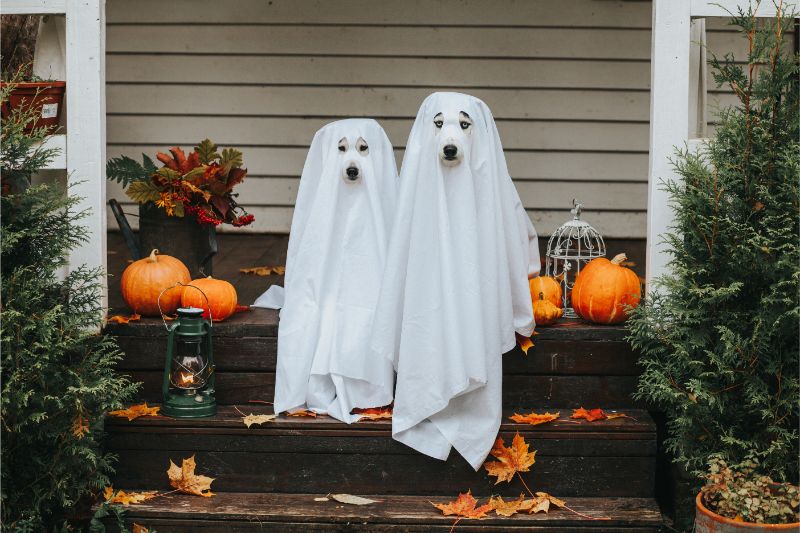
Halloween Pet Safety: Tips, Tricks, and Treats

Between Fall Harvest Days at Mount Vernon and Boo at the National Zoo, there’s no shortage of family outings to celebrate the season. In fact, we all get so caught up with the annual revelry that we soon forget our daily routines.
Normal meal times, opportunities for play and exercise, and important snuggle times are parts of a larger pattern that pets utterly rely on. However, with a hearty nod to Halloween pet safety your pet can enjoy the season for all it’s offerings – and avoid a serious illness or injury.
Anticipation and Anxiety
Many pets can get pretty worked up this time of year. They sense the anticipation in the air, and notice the sudden appearances of both costumes and candy.
If your pet is known to experience stress and anxiety in crowds or around unexpected noise, please refrain from bringing them to public events. Instead of exposing them to confusing trick or treating:
- Settle in at home with loads of praise and assurances
- Keep your pet in a back room away from the constantly ringing doorbell
- Set them up in their crate (if trained) with comforting blankets, a satisfying treat, and a toy or two
- Stressed pets are always thirsty; be sure they have access to fresh drinking water
Got ID?
Even the most well-behaved pets can submit to a fight or flight instinct. Halloween pet safety must involve checking your pet’s collar and ID tags. Even if you’re not going out together on Halloween, gear up your pet in reflective or light up gear in case they bolt through the front door or hop the back gate.
Microchipping is an excellent route to reunion. If your contact information has changed since your pet’s chip was registered, we encourage you to update it with the manufacturer.
Candy & Costumes
It wouldn’t be a blog about Halloween pet safety without outlining the possible dangers related to costumes and candy:
- Candy – Chocolate is by far the biggest offender, but other candies can be dangerously high in fat and sugar. Plus, sugar-free candy and baked goods can contain Xylitol, a highly toxic sugar alternative. You can prevent a pet poisoning by eliminating your pet’s access or exposure to sweets this Halloween. Always check backpacks, treat bags, and candy bowls. Also, candy wrappers can cause choking or GI obstruction if swallowed.
- Costumes – While extremely popular, pet costumes can be risky (if pets even tolerate them at all). Keep a close watch on your pet’s behavior. If they aren’t trying to wriggle free they may not mind dressing up. However, costumes should not restrict breathing, vision, or mobility. If too loose, they may get trapped in attempts to free themselves of it. Dangling accessories can also be choking hazards.
Halloween Pet Safety
For the best approach to Halloween pet safety, reduce your pet’s exposure to animated decorations, strong lights, glow sticks, and candle lit jack-o’-lanterns.
If we can assist you with additional questions or concerns, Arlington Animal Hospital is always here for you. Stay safe!
Contact Us!
2301 Columbia Pike #G-1, Arlington, VA 22204
Phone: (703) 920-5300
Fax: (703) 685-8860
Email: info@myarlingtonvet.com
Office Hours
-
Monday
8 a.m. – 8 p.m.
-
Tuesday
8 a.m. – 8 p.m.
-
Wednesday
8 a.m. – 6 p.m.
-
Thursday
8 a.m. – 6 p.m.
-
Friday
8 a.m. – 6 p.m.
-
Saturday
8 a.m. – 2 p.m.
-
Sunday
CLOSED
- Doctors’ hours are by appointment only.



